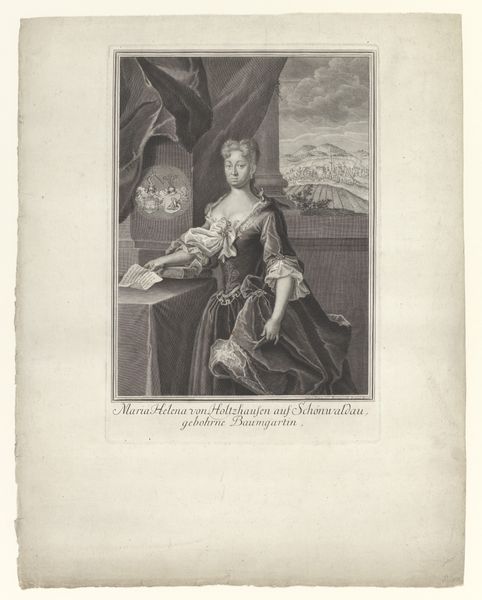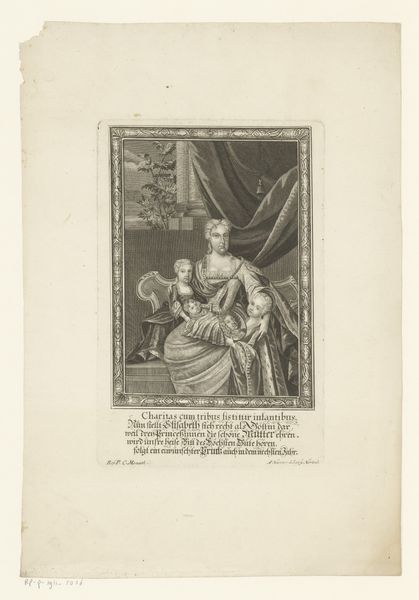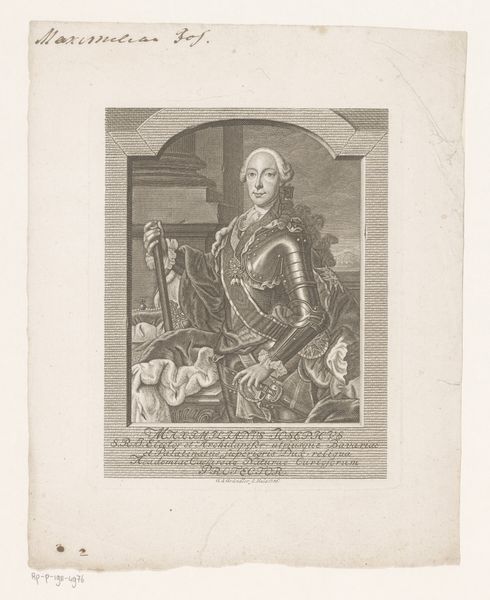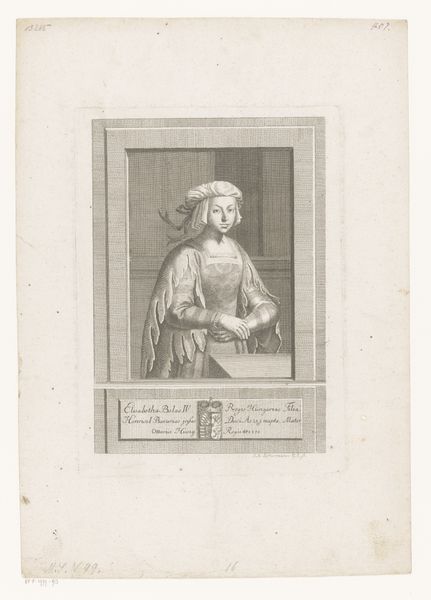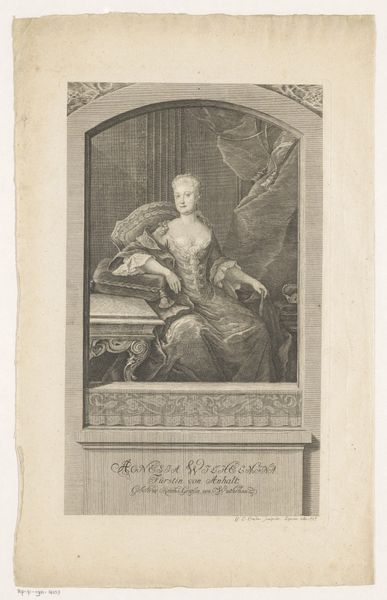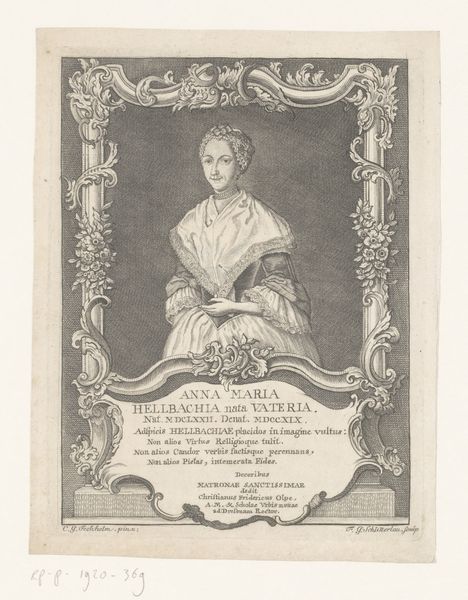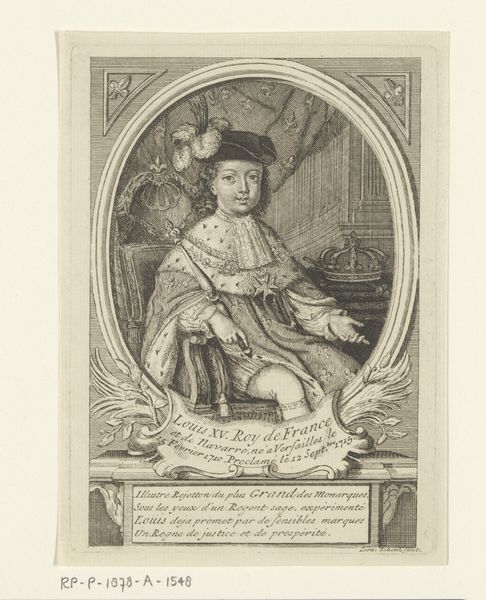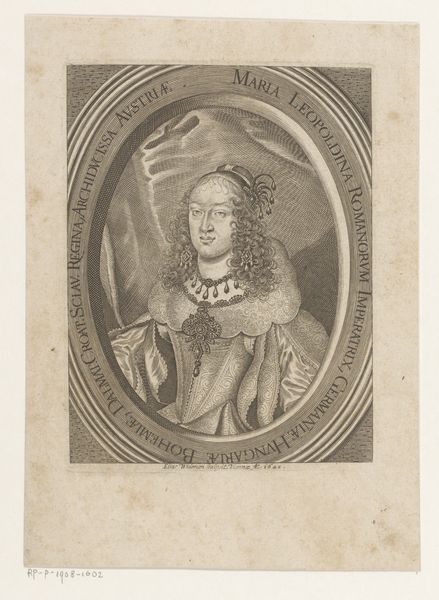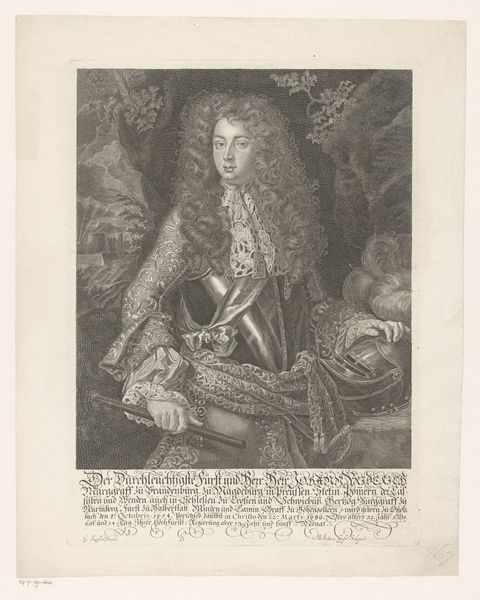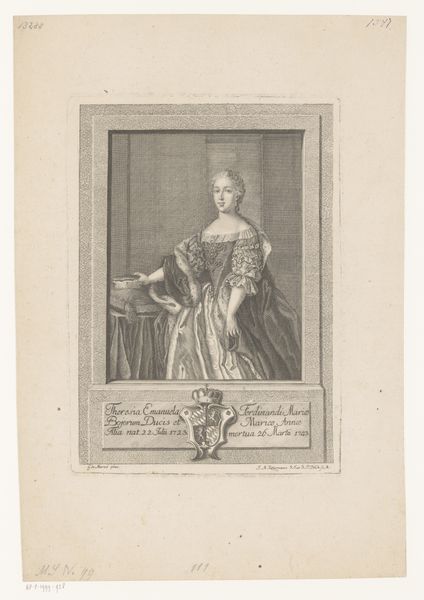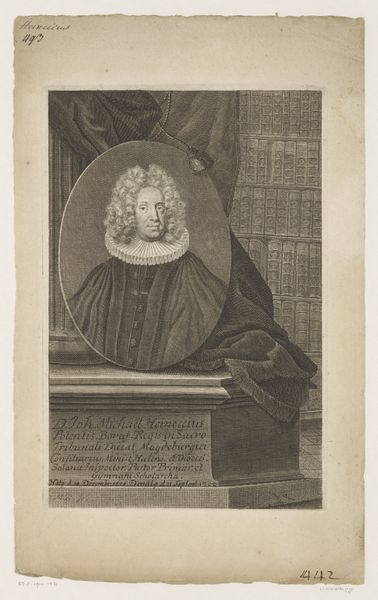
print, engraving
#
portrait
#
baroque
# print
#
history-painting
#
engraving
#
realism
Dimensions: height 402 mm, width 278 mm
Copyright: Rijks Museum: Open Domain
Curator: Let’s examine this engraving titled “Portret van Magdalena Sibylla Schacher” by Martin Bernigeroth, likely completed sometime between 1710 and 1733. Editor: The first thing I notice is the starkness. Despite the ornate details in her dress and the background drapery, the gray-scale palate gives it a solemn, almost ethereal quality. Curator: Engravings like these were often commissioned by or for the upper classes, functioning as tools to circulate and solidify social standing through carefully crafted visual representations. Note the detail in rendering fabrics, especially the depiction of her garments; their richness signaled affluence. Editor: Absolutely, look at the textural variety he achieves using only lines and dots. The silk drapes with its folds and reflective sheen juxtaposes wonderfully with the matte quality of the wall, creating an illusion of depth. I would also point out that there are actually three subjects in this artwork; the main subject plus what appears to be portraits hanging behind her. Curator: An interesting observation! The incorporation of other portraits indicates that this image serves a purpose beyond mere representation. Consider it a visual declaration of familial continuity, social connections, and historical belonging. This also shows the societal fixation on ancestry and noble lineage. Editor: You can see the way Bernigeroth modulates the line weights to define forms—thin, delicate lines for the face, and then thicker, bolder strokes to convey the heft of her shawl. Curator: Indeed, and if you look closely, the portrait isn’t merely about individual likeness but is embedded within a network of power relations. Each carefully positioned element and stylistic choice contributes to a wider narrative concerning status. Editor: I agree completely! Bernigeroth’s formal decisions enhance not only the visual depth, but add social context as well. I found Bernigeroth's ability to synthesize aesthetic form and societal message remarkable. Curator: It prompts reflection on art's intricate relationship with society during the early 18th century.
Comments
No comments
Be the first to comment and join the conversation on the ultimate creative platform.
